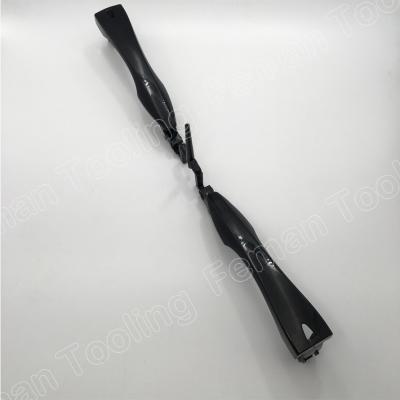The appropriate die steel should be selected according to the application requirements. If prototyping, there is no need to use hardened die steel. In most cases, pre-hardened steel or aluminum is often used to reduce costs and facilitate tooling adjustments during the prototyping stage. These soft metals can also mold enough test pieces and prefabricated parts. Pre-hardened tool steels such as P-20 or NAKR-55 are often used to make large-scale tooling because hardening of tool steels is impractical in large-scale applications.
At higher volumes, injection mold designs of plastic die maker in china require the use of hardened mold steel for the core and cavity. S-7, H-13 and stainless steel 420 are the most commonly used steels. S-7 is an excellent die steel that can be used in production operations for long periods of time. If high melt and mold temperatures are required, H-13 steel should be used. H-13 can also be used to make hot runner manifolds. The tempering temperature of H-13 is very high and can withstand high mold processing temperatures without affecting hardness.
Stainless steels are the best choice for tool steels if the application requires high wear resistance or if there is a lot of condensation in the environment. Cavity inserts with high abrasion resistance can be made from A2, ASP23 or D-2 steel.
All tool steels can rely on some kind of plating protection to prevent wear and corrosion. Only stainless steel can be repaired by welding and machining. For steel that is already coated, repairs can only be carried out after the coating has been removed. Re-coating is required after repair.
1. Sprue bushing
With conventional molds, hot material enters the mold through a sprue bushing. The runner system guides the material through the gate into the mold cavity. Proper design and proper sizing of the sprue bushing is critical for proper melt distribution and proper ejection of the molded part.
The sprue "O" diameter should be approximately 20% larger than the nozzle exit diameter to prevent sprue blockage when the mold is opened. The "O" dimension is also closely related to part and runner size. Heated sprue bushings can be used in place of conventional sprue bushings. The initial cost of a heated sprue (or "hot" bushing) may be higher than a "cold" bushing, but because it eliminates the sprue attached to each component or runner system, it greatly reduces the waste. With thermal bushings, the temperature of the melt entering the runner system can be controlled more precisely.
2. Runner design
The runners should be as short as possible to reduce unnecessary pressure drops. The cross section is preferably circular. If the runner needs to be placed halfway through the mold, use a trapezoidal round bottom runner. Semicircular and flat runners are inefficient and not recommended. The runner should allow balanced, unrestricted flow of material into one or more parts (if multiple cavities are used).
Typically, a runner needs to be reduced in diameter by 20% for every 90 degrees of rotation. This needs to be taken into account when designing the runner system in the injection mold. The diameter of the circular flow channel is usually 0.125~0.375 (3.2~9.5mm).
3. Gate
Injection mold design gates for LNP composite parts should provide ample processing leeway without in-mold stress. Depending on the type of gate used (i.e., latent, edge, lug, etc.), some basic gate dimensions also control the fill rate, the amount of material flowing into the cavity, and the rate at which the part solidifies. The wall thickness determines the size of the gate, and the part geometry determines the location of the gate on the part.
